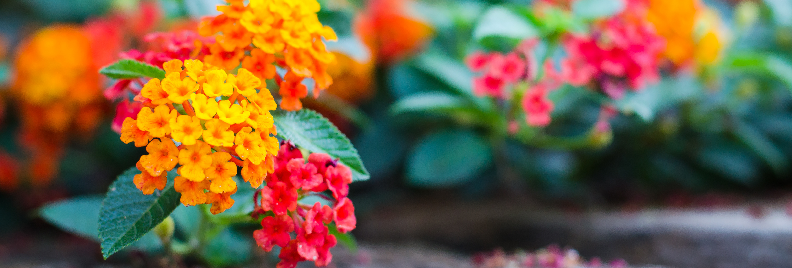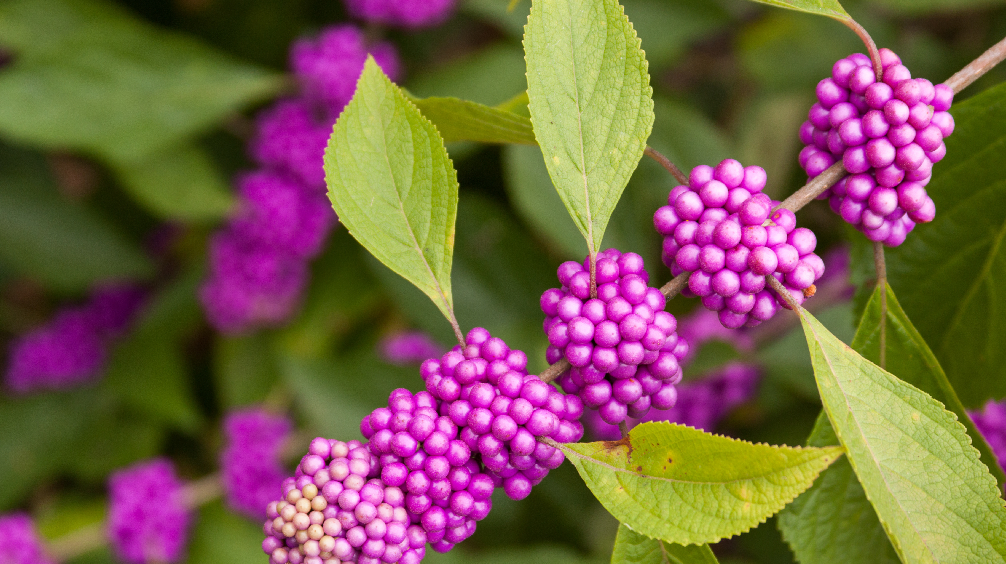
Native Plants: What They Are And Why We Love Them
Our Favorite Native Plants Of The Gulf Coast (and this is just a few)
If you haven’t gotten on board the native plants bandwagon yet, what are you waiting for?! Planting native species has a long list of benefits for your garden, your time, and the environment. Native plants grow in the wild here, which means they’re perfectly suited to our climate. While there’s certainly an allure to importing exotic tropicals to add to our garden, some of them can be a little finicky.
Luckily, there is no shortage of beautiful plants that call Texas home, and they grow their biggest and boldest when they’re here in their most ideal conditions. It’s kind of like when Beyonce plays a concert in Houston—sure, she puts on a spectacular show wherever she goes, but you can tell she’s in her element when she’s back in her hometown.
If you aren’t convinced yet, here are some reasons why planting species that occur naturally in Texas will benefit you and the environment, plus a list of some of our favorite varieties you should add to your landscape.
They’re low-maintenance: Since they’re equipped to grow naturally in the wild, you don’t have to fuss over native plants with extra mulch, fertilizer, or even water. Sure, giving them a little drink here and there won’t hurt, but they’re built for withstanding our typical weather patterns, so you don’t need to keep too close an eye on them. Once they’re established and have a sound root system, you can forget about them for a while and let them do their thing without worrying about the last time you watered.
Pollinators love them: Bees, butterflies, and birds are integral pieces of the puzzle when it comes to maintaining the balance of our ecosystem. They pollinate our plants, and without their help, so many of our natural food sources wouldn’t properly develop. If you add plants to the garden that grow naturally here, pollinators are much more likely to recognize them and visit because they like what’s familiar to them. I kind of know the feeling—sometimes when you’re traveling abroad in a faraway country, you can’t help but stop in at a McDonalds at some point. The familiarity is comforting (and delicious).
They provide food sources for wildlife: Show some love to our animal friends by planting Texan shrubs, trees, and plants that produce edible parts, like berries. You gotta love having a yard that’s frequented by a band of adorable woodland creatures—though you might get the urge to go full-on Snow White and twirl around in the yard belting show tunes. Isn’t that how we all want to spend our Saturday nights? No? Just me?

Our Favorite Native Plants Of The Gulf Coast (and this is just a few)
To achieve the ultimate low-maintenance garden that requires barely any upkeep, but is still just as beautiful and diverse as any other flower garden, take a look at some of these gorgeous species that call Houston their home.
Beautyberry: This Texan shrub certainly comes by its name honestly—its bright purple berries look like little round gemstones adorning its glossy emerald foliage. While many varieties hail from Southeast Asia, the American Beautyberry is right at home here. It usually grows to about 5 feet tall and wide, but if soil conditions are really favorable, you could end up with a beautyberry bush as high as 9 feet tall.
Possumhaw Holly: We love this colorful, festive berry bush. It’s no wonder people deck the halls with it at Christmastime! The bright red berries are quite tenacious, holding on through winter even after its deep green leaves have turned yellow and fallen off. It grows up to 30 feet tall and has lovely white flowers in the spring. Local critters like songbirds, foxes, and—you guessed it—opossums, love to snack on these tasty berries.
Lantana: The multi-tonal flower clusters of the lantana look like mini-bouquet arrangements, with hot pinks, yellows, and oranges that instantly brighten up the landscape. If you love the vibrant neon colors of exotic tropical plants, but don’t like the hassle of having to meet their diva demands, you’ll love the low-maintenance lantana.
Native Hibiscus (AKA: Texas Star): This iconic blossom with its bold colors and dramatic petals are a symbol of the tropics, so many folks are surprised to hear that several varieties grow naturally in the South. The Texas Star hibiscus is one of our favorites, available in either white or red. It grows in swampy areas with moist soil, so if you have any ponds or bodies of water on your property, we recommend planting Texas Star hibiscus along the border.


Native Aster: We love the cute, daisy-like appearance of this purple flower, and so do pollinators like butterflies and bees! They bloom in fall, so they’re an excellent option for bringing some color to the garden after our summer annuals have receded.
Native Milkweed: Do you love monarch butterflies? Then you absolutely have to plant some milkweed in your yard. Monarchs are entirely reliant on milkweed as a food source for their young, and the use of commercial pesticides has threatened their population dramatically, so planting milkweed will help keep this beautiful species alive and thriving.
Native Persimmon Tree: This semi-evergreen plant usually doesn’t exceed 15 feet, so it makes a beautiful ornamental tree (or shrub) for the front yard. They’re dioecious, which means there are both male and female plants, so if you want to enjoy some tasty persimmon fruits to add into jams, desserts, or wine (yes, wine!), then opt for a female tree. The fruit will arrive in summer, sporting a vivid green color at first, but once they turn black, they’re ready to be picked, peeled, and eaten.
Native Plum Tree: Is there anything more satisfying than a juicy, cold plum fresh from the icebox on a hot day? The Flatwoods plum is another ornamental tree that typically won’t grow over 15 feet, so you’ve got lots of options of where to plant it. The white flowers it produces are so gorgeous—you’ll love the ethereal, romantic vibe they bring to the landscape.
For more information on naturally-occurring plants in our area, talk to our experts at our garden center in Houston. We have a pretty incredible selection at Plants for All Seasons, so you’ll have plenty of different beautiful varieties to add to your landscape. The birds, butterflies, and bumblebees will be glad you did!
